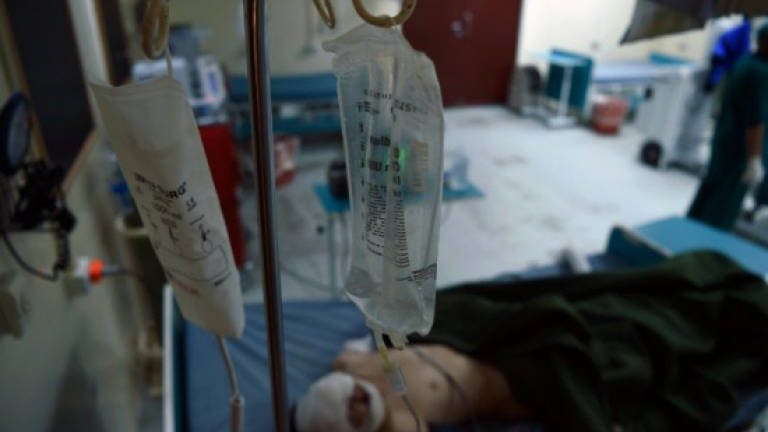Grinding conflict takes toll on Afghan military hospital

CAMP SHORAB, Afghanistan: Three of the five surgeons at a military hospital in Afghanistan's bloodiest province are learning their skills on the job as they struggle to keep up with a never-ending flow of injuries.
The heavy workload at the Afghan National Army's no-frills 215th Corps hospital in Helmand is fuelled by a war to which US President Donald Trump has just signed an open-ended commitment.
Surgeons, doctors and nurses at the facility in the hot and dusty Camp Shorab base sometimes spend up to 24 hours on their feet, treating injuries caused by the Taliban's highly effective improvised explosive devices (IEDs), mortars and guns.
The bodies of police and soldiers killed in fighting across the province, Afghanistan's largest, are also brought to the hospital, where staff arrange their transfer to poor families, grieving not only the loss of a loved one but also of a breadwinner.
"There's a lot of pressure on us because we have limited staff and we get a lot of injuries. One person is doing the work of four people," said Mohammad Karim, one of the three surgeons who picked up his operating skills at the hospital.
The 50-bed military hospital is one of the busiest in the country, accounting for a quarter of all medical evacuations to better-equipped facilities in Kabul, US and Afghan officials say.
Such is the demand for beds that the wounded spend at most a few days convalescing there before being airlifted to the capital for further treatment.
A lack of specialised staff means those on duty are often required to do work that falls outside their area of expertise.
"We are trying our best to serve our people," said hospital chief Brigadier General Hussain Gul Paknihad.
Their efforts have been recognised at the highest levels of the Afghan government. The facility, one of six military hospitals in the country, was recently awarded the presidential "Medal of Excellence".
Helping hand
In the well-used intensive care unit the main sound is the steady beeping of machines monitoring the vital signs of two badly wounded Afghan soldiers.
Male nurses wearing green scrubs and matching hats brush aside a white mosquito net hanging over the doorway to check the readings of their heavily bandaged patients – casualties of the resurgent Taliban in the opium-rich province.
The strong smell of fresh paint wafts from another section of the hospital undergoing a facelift into the room where the two soldiers lie unconscious, awaiting surgery.
Both men, aged in their early 20s, were wounded during a battle with insurgents in Helmand's Sangin district – one by a gunshot to the head, the other by a mine explosion.
"They will do anything and everything they can possibly do when it comes to surgery, emergency and trauma," said Michael Mercado, a US Navy doctor who has been helping the hospital since April as part of Nato's "train, advise and assist" mission in Afghanistan.
Heavy casualties among the demoralised Afghan forces since the withdrawal of US-led Nato combat troops in 2014 have put a huge strain on the 215th Corps hospital and its medical staff, who live in shared rooms nearby so they can be called back to work when needed.
In the 12 months to February nearly 1,600 soldiers and police wounded in action were brought to the facility, along with nearly 780 dead.
But there are hopes that the return of Marines to Helmand – the deadliest province for US troops during the 16-year war – and Trump's pledge to keep American boots on the ground indefinitely will help reduce this year's toll.
Since March the hospital has received 574 wounded and 276 dead from the battlefield, which Afghan and US officials attribute to better training of security forces and improving leadership in Afghan ranks.
"We are happy that we have the Marines beside us, helping us," said Paknihad. — AFP